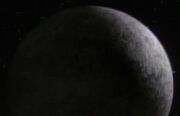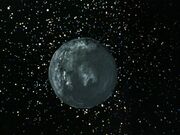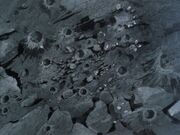
Epsilon 119, a dead star

Dead star at the fringe of the galaxy

Surface of above dead star
A dead star, occasionally called a dead sun, was a type of astronomical object.
Questar M-17 was an example of such a star was found to be orbited by an ancient insectoid ship in 2269. (TAS: "Beyond the Farthest Star")
In the mirror universe, the Tholians detonated a tricobalt warhead inside the gravity well of a dead star, thus creating an interphasic rift forming a doorway into another universe. (ENT: "In a Mirror, Darkly")
In 2370, Professor Gideon Seyetik attempted to re-ignite a dead star called Epsilon 119 using protomatter. The theory was that it would cause a cascade effect transforming the star's carbon and oxygen into elemental hydrogen. He succeeded but lost his life in the attempt. (DS9: "Second Sight")
The antimatter universe contained dead stars too, for example Amphion, counterpart of Beta Niobe. In 2270, it unexpectedly went nova, and a gateway to the regular universe opened up, apparently by Beta Niobe going nova at the same time. (TAS: "The Counter-Clock Incident")
